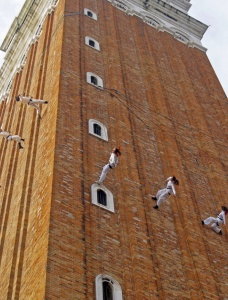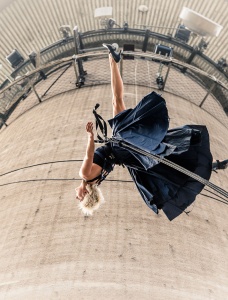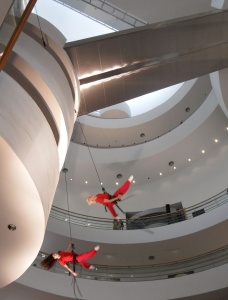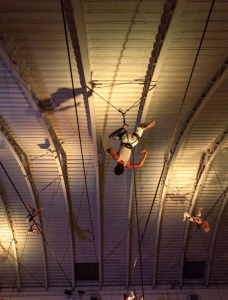SONORA LUX is a journey of convergence that interweaves the dance of a suspended body which establishes relationships with each segmented limb and the solitude of a solo sax with the dreamlike sound landscape of loops and electronica produced by Marco Castelli.
A dancer produces shapes in a half-hidden space of the stage, her movement is captured by video cameras and screened in real time on an adjacent surface. The stage is transformed and the dancer’s suspended body takes up the centrality of the space once more. Like an invitation to investigate the body in suspension and select the parts, the articulations and the bones, the angle of the view made possible by the vertical surface of the dance and by the video screening of the body in movement accommodates and induces new perspectives.
Sonora lux has something in common with how we see ourselves from outside, the memory of the body and view that we have of ourselves, which is always external and always in the past. It refers to an often distorted image, occasionally from a different perspective but one which we believe is real.
The relationship with the space undergoes an abrupt change of meaning: right, left, forwards, backwards; and of gravitational projection: above, below, high, low. Memory is a space made of light and sound. In the performance we try to recreate that intellectual space as a palpable morphing that is visible to all; we try to touch that intimate moment and recreate it on stage.
SONORA LUX is set up differently each time based on the architectural conditions of the space in the same way a work of art is installed in a new place. Harnesses and ropes allow us to find a starting point from which to explore the body while sound allows us to shift the time and duration of the dynamics, and the interactive video means that we can establish an extremely powerful physical relationship between the audience and the setting.
The project is subdivided into three segments: the musician on the sax plays some opening bars, the dancer moves in a space lateral to the stage, the elements of aerial and vertical dance leading to centrality, while the live videos create other spaces which depict the action, permitting a different view of the movement.
The performance is better suited to closed spaces.



